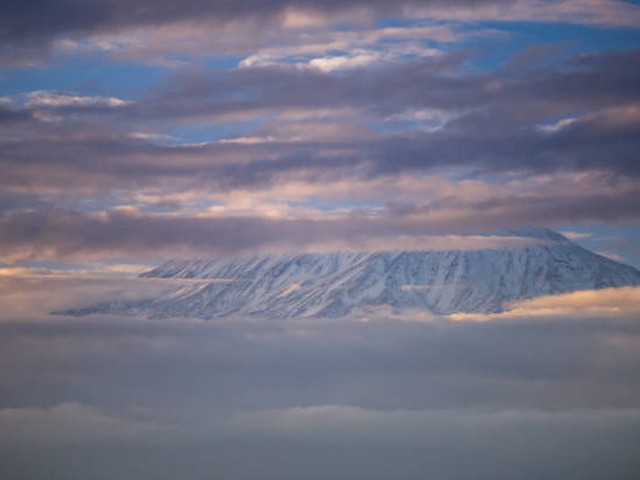How To Deal With Kilimanjaro Altitude Challenges: Your Ultimate Guide
Discover the Skies – One Breath at a Time!
Standing as a beacon of strength and beauty, Mount Kilimanjaro calls to adventurers from around the globe. Known fondly as the “Roof of Africa”, this majestic peak offers not only breathtaking views but also a challenge that attracts throngs of intrepid climbers every year. However, the journey to Uhuru Peak isn’t merely a physical test but a battle against the altitude as well. At Kilimanjaro Centre for Trekking and Ecotourism (KCTE), we understand that the key to enjoying and conquering Kilimanjaro lies in mastering the altitude challenges. Through this blog, let’s embark on a journey to understand and conquer these challenges, making your climb a memorable and triumphant experience!
Understanding Altitude Sickness
What is Altitude Sickness?
Altitude sickness, or Acute Mountain Sickness (AMS), is the body’s response to the lower oxygen levels found at high elevations. Symptoms can range from headache, nausea, and dizziness to more severe effects. Knowing how to manage these symptoms is crucial for any climber.
Pre-Acclimatization: The First Step
Before you even set foot on Kilimanjaro, start preparing your body. If possible, spend some time at higher altitudes to familiarize your body with the decreased oxygen levels. Even using an altitude training mask can be beneficial.
Preparing for the Climb
Physical Fitness: The Foundation
While mental fortitude is key, physical preparation cannot be overlooked. Engage in regular cardiovascular exercises such as running, swimming, or cycling. Strength training and hiking at altitude can significantly boost your stamina and endurance.
Packing Right: Essential Gear
Ensure you have the right gear which should include appropriate clothing, a sturdy pair of boots, hydration packs, and snacks that are high in energy. Remember, the right equipment can make a significant difference.
On the Mountain: Practical Tips for Beating Altitude
Pace Yourself: Slow and Steady
The golden rule on Kilimanjaro is “pole pole” (slowly, slowly in Swahili). Keeping a pace that allows you to breathe easily is key in preventing AMS.
Hydration is Key
At high altitudes, the dry air increases the rate of water vapor lost from the lungs. This, coupled with exertion, can lead to dehydration, which in turn can exacerbate altitude sickness symptoms. Aim to drink at least 3-4 liters of water daily.
Eat Well: Fuel for the Climb
Your appetite might decrease at higher altitudes, but maintaining energy intake is crucial. Opt for easy-to-digest high-carbohydrate foods which are also high in calories. This will keep your energy reserves up and help your body adjust to the altitude.
Listen to Your Body: Recognizing Symptoms
Being aware of how your body feels can make all the difference. Recognize the symptoms of AMS and consult with your guide immediately if you feel unwell. Our guides at KCTE are trained to deal with such situations, ensuring your safety and well-being.
After the Summit: Recovery and Reflection
Reaching the summit is exhilarating, but remember that the descent is part of the journey. Keep hydrated and maintain a moderate pace. Once you are at a lower altitude, take time to rest and reflect on your achievement.
Why Climb with Kilimanjaro Centre for Trekking and Ecotourism (KCTE)?
At KCTE, we not only offer guided climbs but a chance to immerse yourself in a life-changing adventure. Our experienced guides, comprehensive acclimatization protocols, and personalized care ensure that you are safe, informed, and ready to meet the challenges of Kilimanjaro. We believe in sustainable tourism and are committed to preserving the beauty and integrity of this majestic mountain.
FAQs: Tackling Kilimanjaro’s Altitude Head-On
Q1: How long does it take to acclimatize to Kilimanjaro’s altitude?
Acclimatization varies, but we recommend a slow ascent over 7-9 days to optimize acclimatization and increase summit success rates.
Q2: What medication can help with altitude sickness?
Medications like Acetazolamide can be used to prevent and reduce the symptoms of altitude sickness. However, consult with a healthcare provider before taking any medication.
Q3: Can anyone climb Kilimanjaro, or is it only for experienced climbers?
Kilimanjaro is accessible to anyone who is physically fit and properly prepared. No prior climbing experience is required, making it an ideal summit for first-timers and seasoned climbers alike.
Q4: What is the best time of year to climb Kilimanjaro?
The best times to climb are during the dry seasons: January to mid-March and June to October. These months offer the most favorable weather conditions for climbing.
Ready to Conquer Kilimanjaro?
Remember, the journey to Uhuru Peak is not just about reaching the summit; it’s about embracing every moment, every breath, and every challenge along the way. At Kilimanjaro Centre for Trekking and Ecotourism, we are dedicated to making your climb successful and memorable. Book your Kilimanjaro adventure with us today, and stand atop the Roof of Africa, ready to conquer not just mountains, but anything life throws your way!
Embrace the Challenge – Conquer Kilimanjaro with KCTE!




